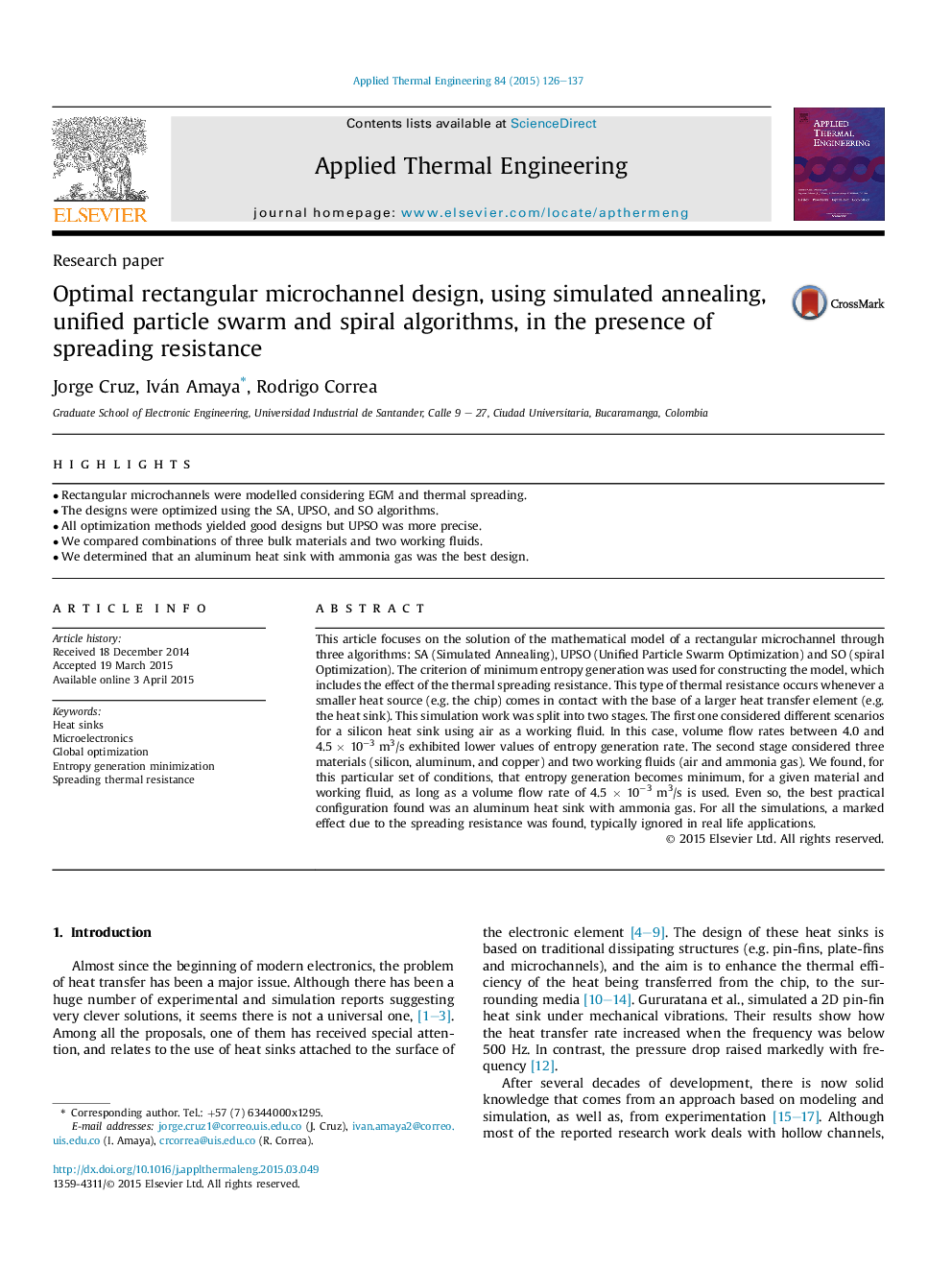| Article ID | Journal | Published Year | Pages | File Type |
|---|---|---|---|---|
| 645563 | Applied Thermal Engineering | 2015 | 12 Pages |
•Rectangular microchannels were modelled considering EGM and thermal spreading.•The designs were optimized using the SA, UPSO, and SO algorithms.•All optimization methods yielded good designs but UPSO was more precise.•We compared combinations of three bulk materials and two working fluids.•We determined that an aluminum heat sink with ammonia gas was the best design.
This article focuses on the solution of the mathematical model of a rectangular microchannel through three algorithms: SA (Simulated Annealing), UPSO (Unified Particle Swarm Optimization) and SO (spiral Optimization). The criterion of minimum entropy generation was used for constructing the model, which includes the effect of the thermal spreading resistance. This type of thermal resistance occurs whenever a smaller heat source (e.g. the chip) comes in contact with the base of a larger heat transfer element (e.g. the heat sink). This simulation work was split into two stages. The first one considered different scenarios for a silicon heat sink using air as a working fluid. In this case, volume flow rates between 4.0 and 4.5 × 10−3 m3/s exhibited lower values of entropy generation rate. The second stage considered three materials (silicon, aluminum, and copper) and two working fluids (air and ammonia gas). We found, for this particular set of conditions, that entropy generation becomes minimum, for a given material and working fluid, as long as a volume flow rate of 4.5 × 10−3 m3/s is used. Even so, the best practical configuration found was an aluminum heat sink with ammonia gas. For all the simulations, a marked effect due to the spreading resistance was found, typically ignored in real life applications.
